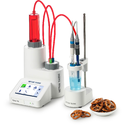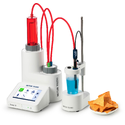Used for millennia as a food flavoring and preservative agent, table salt (sodium chloride, NaCl) is widely consumed around the world. While sodium and chloride ions play essential roles in physiological processes, individual sodium intake for both adults and children generally exceeds dietary requirements in most countries.
Elevated dietary sodium has been shown to be a risk factor for high blood pressure. To help reduce the occurrence of cardiovascular disease, the World Health Organization (WHO) has a stated goal of reducing the per capita consumption of table salt by 30% before 2025 with an ultimate aim of limiting sodium intake to no more than 2000 mg per day.
An important aspect of the initiative is the broad implementation of clear and easy-to-interpret nutrition labels on processed foods. To fulfill these labeling requirements, and because of sodium’s multiple sources in baked, processed and prepared foods, choosing an accurate sodium content determination method has become important for food and beverage producers.










